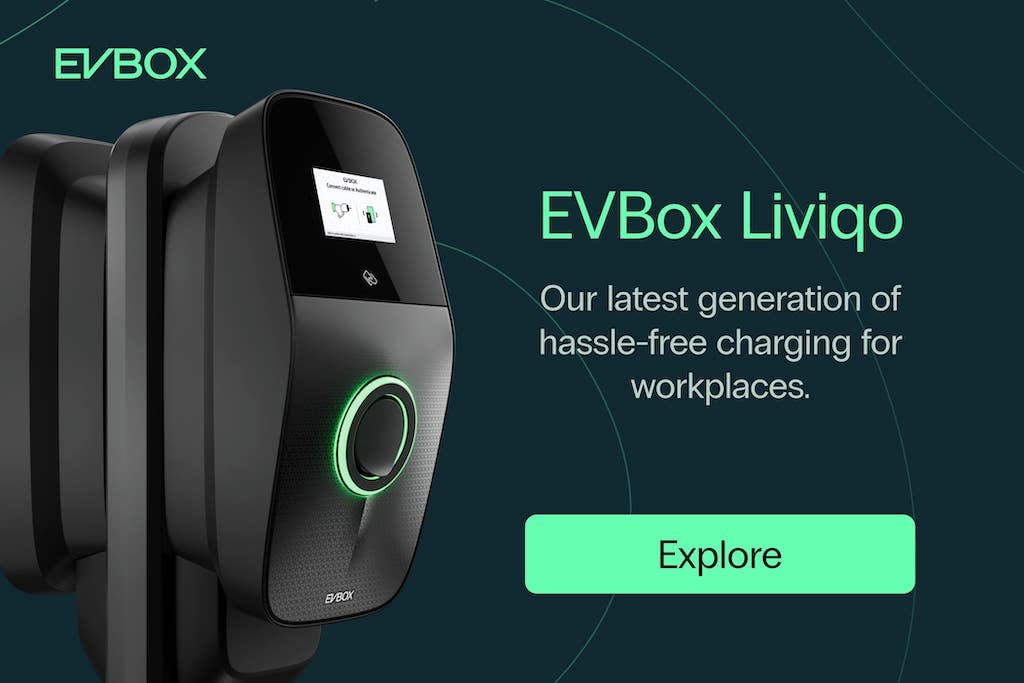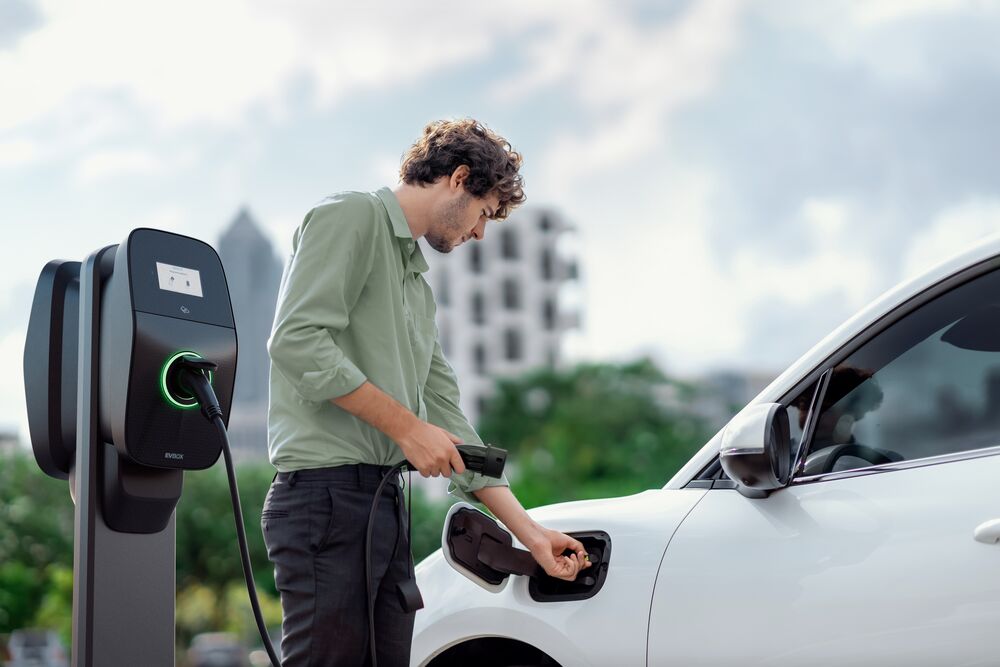1. EV charging at work is convenient

When it comes to workplace charging, offering convenience for your employees is one of the most obvious benefits. Instead of just relying on home charging to charge their vehicle, EV drivers prefer to charge wherever they are. Known as the top-up model, this approach means charging can happen anywhere; at home, work, around the city, or out of town.
The main reason EV drivers prefer this model is it eliminates the (somewhat overblown) fear of range anxiety. While running out of power in the middle of nowhere is unlikely given that only one fifth (23.3%) of European drivers travel more than 40 km a day, while 36.2% travel less than 10 km, providing employees with a place to charge at work gives them peace of mind.
Plus, as 42 percent of EV drivers think EV charging is too time-consuming, why not make them even happier by letting them charge during office hours? With a fully charged EV by the day’s end, your employees can get on with their life outside of work with ease and not have to worry about looking for a charger on the street.
What’s more, not all EV drivers have access to home charging, making workplace charging even more essential. Providing EV charging for your employees demonstrates your business is a responsive and committed employer. This brings us to our next point:
2. EV charging at work boosts productivity

It’s the little things that matter when it comes to boosting employee productivity—and pleasing employees with EV charging has the potential to do just that.
Thanks to offering the convenience of charging at work, you save your employees time and worry. With less time wasted searching for a place to charge, your employees are more likely to be on time (think of all those valuable hours of productive time added back to an employee’s day). They may even work a little longer to wait for their EV to fully charge.
Moreover, providing your employees an amenity they truly need can make them feel valued. Employees who feel valued by the business are more engaged and productive. This all adds to your EVP – your employee value proposition, a benefit that goes beyond the salary your workers get at the end of the month.
With a deeper level of trust and security at work, your workforce will have more energy to create value back to your company—a win-win for your employees and your business.
3. EV charging helps to attract and retain talent

Alongside keeping your existing workforce happy and productive, adding EV charging can also play a part in attracting and retaining talent. More and more, employees expect their workplace to be socially and environmentally conscious. In fact, a study by Gallup found that 71% of workers consider a company’s environmental record when deciding on an employer.
It makes sense then to see that improving a facility’s image is one of the top five issues on the agenda for facility managers. With energy-efficient buildings earning major “PR points” in the public eye, certifications like LEED and BREEAM are highly sought after—and guess what earns certification points? EV chargers, of course. Plus, EV charging stations are a much more visible solution for those who are just passing by––they literally stand out in your parking space, and can be designed to include your logo, being a further advertisement of your climate-positive actions.
Therefore, installing EV charging stations at your workplace is an effective way to showcase support for innovation and improving the environment. Approximately six out of ten (potential) EV drivers think electric cars are part of the solution to fight climate change. This means you can attract talent who share a passion for the issues you're trying to solve. Moreover, you can enable employees to play a key role in accelerating the global EV movement.
4. EV charging helps employees reduce their carbon footprint

Transport represents almost a quarter of Europe's greenhouse gas emissions and is the main cause of air pollution in cities. About six in ten among the general public say reducing CO2 emissions in transportation is important to them. Experts broadly agree that EVs create a lower carbon footprint over the course of their lifetime than their gas-guzzling counterparts. With technology advancing, and EV production improving, these CO2 emissions are set to reduce even further.
By offering workplace charging infrastructure, you can significantly lower your carbon footprint from employee and customer travel. For companies with a lot of employees, emissions from employee commutes add up quickly. More than that, you will be encouraging employees to transition to EVs, which can make a serious impact when it comes to reducing emissions.
What's more, if EVs are powered by your building’s solar installation, they'll emit 90 percent less harmful emissions in their lifetime than conventional cars—all things your purpose-driven employees will be happy about.
5. EV-driving employees can claim a range of incentives

Government’s around the world are committed to increasing the number of EVs on the road to meet ambitious climate change targets. To reflect this priority, the way vehicles are taxed offers a range of incentives for companies and EV-driving employees alike.
Several EU member states apply CO2-based taxation to passenger cars. There are many variations. In the UK for example, the government introduced tax cuts for employees using corporate EVs for personal use. What’s more, the government covers up to 75% of the costs of purchase and installation of EV charging stations at workplaces.
Belgium, Denmark, France, Greece, Hungary and other countries in the EU also offer incentives for EV drivers using company cars.
The future is electric
The electric mobility movement is not slowing down. To lead the pack, offering workplace charging facilities now is essential. Doing so will bring your business (and employees) a multitude of benefits—and position you as a responsible leader in innovation for years to come.
Discover more about EV charging for workplaces
Now that we've discussed the five main benefits of offering EV charging at the workplace, you might want to learn more about the challenges or trends that affect workplaces switching to electric mobility. Check out our complete guide to understand more about this important topic.










